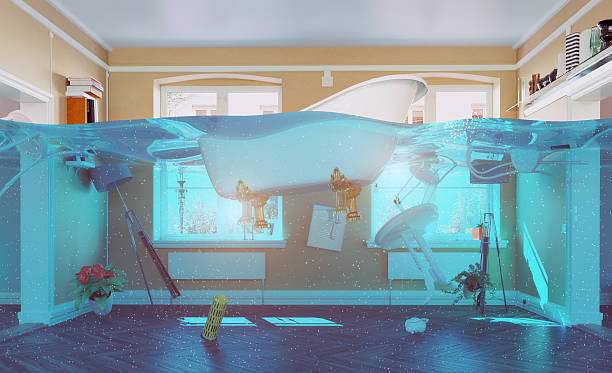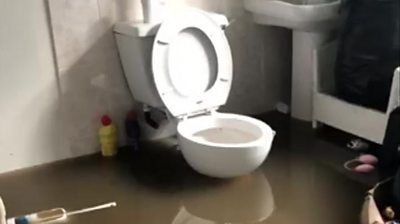Reasons Contributing to Bathroom Water Deterioration
Reasons Contributing to Bathroom Water Deterioration
Blog Article
Were you on the lookout for ideas on How to Repair and Prevent Bathroom Water Damage??

Water damage typically occurs in the restroom because of the water made use of day-to-day. Occasionally, the damages could be a little mold from the shower. Various other times, it's large damage on your floor. Whatever it is, it is constantly good to recognize the cause and also avoid it before it occurs.
This guide will certainly go through a few of the typical sources of water damage in the restroom. We will likewise analyze what you can do to stop these reasons from damaging your shower room. Allow's dive in.
These are the common reasons you would have water damage in your washrooms and just how you can detect them:
Excess Moisture
It's amazing to have that lengthy shower as well as sprinkle water while you hem and haw and also imitate you're executing, yet occasionally these acts can create water damage to your washroom.
Spraying water around can trigger water to visit corners and form molds. View how you spread out excess wetness around, and when you do it, clean it up to stop damage.
Splits in your wall floor tiles
Restroom wall surface tiles have actually been specially created for that purpose. They secure the wall surface from wetness from individuals taking showers. However, they are not unbreakable.
Sometimes, your restroom wall surface floor tiles crack as well as permit some dampness to seep into the wall. This might possibly damage the wall surface if you don't take any action. If you observe a split on your wall surface floor tiles, repair it right away. Don't wait up until it damages your wall.
Overflowing commodes and sinks
As human beings, often we make mistakes that might cause some water damage in the washroom. For example, leaving your sink tap on can create overflowing and damages to other parts of the washroom with moisture.
Also, a faulty bathroom might create overflowing. For instance, a broken toilet deal with or other parts of the tank. When this takes place, it could harm the flooring.
As quickly as you notice an overflowing sink or toilet, call a plumbing to help manage it quickly.
Ruptured or Dripping Pipes
There are several pipelines bring water to different parts of your restroom. Some pipes take water to the bathroom, the sink, the faucets, the shower, and also several other areas. They crisscross the small location of the bathroom.
From time to time, these pipelines could obtain rusty and also ruptured. Other times, human activity might create them to leakage. When this happens, you'll find water in the edges of your restroom or on the wall surface.
To identify this, look out for bubbling walls, molds, or mildew. Call an expert emergency situation plumbing technician to repair this when it takes place.
Roof covering Leakages
Often, the trouble of water damage to the washroom could not originate from the washroom. As an example, a roof covering leak can create damages to the shower room ceiling. You can identify the damage done by checking out the water stains on the ceiling.
If you locate water spots on your ceiling, check the roof to see if it's harmed. Then, call an expert to assist solve the concern.
Verdict
Water damage to your restroom can be irritating. Nonetheless, you can handle it if you protect against some of the reasons mentioned in this overview. Call a specialist emergency plumbing professional if you notice any type of serious damages.
How to Repair a Water-Damaged Wall in the Bathroom
All you need to know to repair bathroom wall water damage – from identifying the water source to finishing the repair professionally. If you don’t act quickly to resolve a water damage problem, you could find that it develops into a mold issue and/or cause structural damage to your home. Follow this guide to repair your bathroom before it's too late.
All you need to know to repair bathroom wall water damage
Water damage is a common household problem, and one that, if left unrepaired, can quickly lead to structural problems and health issues. The two most likely rooms where water damage may occur is the bathroom and the kitchen – where water is used often and there is high humidity.
What is water damage?
It is easy to think of water damage as caused by a flood or leaking tap or burst water pipe. However, when water damage is assessed, there are three main categories into which water falls (as classified by the American National Standards Institute). These categories are defined as:
Category 1 Water – ‘Clear Water’
This is sanitary water. There is usually no major threat to health by washing with this water, drinking it, or inhaling if it is streaming. Most water that enters your home will be category 1 water, while most water leaving your home will be either category 2 or 3 water. It may also come from melting snow, rainwater and water tanks.
Damage caused by this type of water can usually be repaired or restored, though this doesn’t mean that there are no potential health issues.
Category 2 Water – ‘Grey Water’
This is contaminated water – sometimes considerably so – and will cause illness if consumed or if it comes into contact with your skin. Water damage in this category is often caused by overflows from toilet bowls, and damage to washing machines and dishwashers. While damaged items might still be repaired or restored after damage by grey water, it is more difficult and more expensive to do so.
If the water damage in your home has been caused by grey water, it is advisable to have repairs made by professionals.
Over time, grey water will deteriorate and become black water.
Category 3 Water – ‘Black Water’
Category 3 water, also known as black water, is highly contaminated and a great risk to health. This may contain raw sewage, heavy metals, and other toxic substances. It will smell terrible.
If this is the water that has caused damage in your bathroom, do not touch it. Stop the water flowing if possible, seal the room and call the experts: it really isn’t worth the risk of ill health and disease that could be fatal. It is very unlikely that items can be repaired or restored if they have been damaged by black water.
https://www.porterscleaning.com/blog/how-to-repair-a-water-damaged-wall-in-the-bathroom/

Hopefully you liked our post on How to Repair and Prevent Bathroom Water Damage?. Thanks so much for finding the time to read our piece. Sharing is caring. One never knows, you could be doing someone a favor. Many thanks for taking the time to read it.
Top Article Report this page